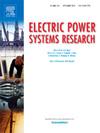Modeling of two-stage continuous co-phase traction power supply system with different compensation schemes
IF 4.2
3区 工程技术
Q2 ENGINEERING, ELECTRICAL & ELECTRONIC
引用次数: 0
Abstract
The two-stage continuous co-phase traction power supply system (TPSS) provides a promising solution for long-distance power supply, eliminating neutral sections in conventional AC 25 kV TPSS and improving the direct utilization of regenerative braking energy. Co-phase compensation devices (CCDs) are implemented in this novel TPSS to mitigate the three-phase voltage unbalance caused by single-phase train loads. This paper investigates compensation schemes, strategies, and power decoupling models for CCDs, and the operation characteristics of CCDs are revealed by constructing a power flow calculation (PFC) model. First, centralized and distributed compensation schemes and strategies for CCDs under minimum capacity are proposed, along with the corresponding power decoupling models. Second, a dynamic equivalent network modeling method is proposed to overcomes the limitations of the conventional sequential linear power flow method for solving PV node loads. An alternating iterative method is proposed to solve the PFC model with CCDs. Finally, based on an urban rail transit line in Chongqing, China, the correctness and effectiveness of the proposed compensation scheme, compensation strategy, PFC model, and solution method are verified, and the operation characteristics of different compensation schemes and strategies are revealed. The results indicate that the proposed method demonstrates superior convergence performance.
不同补偿方案下两级连续共相牵引供电系统的建模
两级连续共相牵引供电系统(TPSS)消除了传统交流25kv TPSS的中性段,提高了再生制动能量的直接利用,为远距离供电提供了一种有前景的解决方案。在这种新型TPSS中采用了共相补偿装置(CCDs)来减轻单相列车负载引起的三相电压不平衡。本文研究了ccd的补偿方案、策略和功率解耦模型,并通过建立功率流计算(PFC)模型揭示了ccd的运行特性。首先,提出了最小容量下ccd的集中式和分布式补偿方案和策略,并建立了相应的功率解耦模型。其次,针对传统顺序线性潮流法求解光伏节点负荷的局限性,提出了一种动态等效网络建模方法。提出了一种求解带ccd的PFC模型的交替迭代法。最后,以重庆某城市轨道交通线路为例,验证了所提补偿方案、补偿策略、PFC模型和求解方法的正确性和有效性,揭示了不同补偿方案和策略的运行特点。结果表明,该方法具有较好的收敛性能。
本文章由计算机程序翻译,如有差异,请以英文原文为准。
求助全文
约1分钟内获得全文
求助全文
来源期刊

Electric Power Systems Research
工程技术-工程:电子与电气
CiteScore
7.50
自引率
17.90%
发文量
963
审稿时长
3.8 months
期刊介绍:
Electric Power Systems Research is an international medium for the publication of original papers concerned with the generation, transmission, distribution and utilization of electrical energy. The journal aims at presenting important results of work in this field, whether in the form of applied research, development of new procedures or components, orginal application of existing knowledge or new designapproaches. The scope of Electric Power Systems Research is broad, encompassing all aspects of electric power systems. The following list of topics is not intended to be exhaustive, but rather to indicate topics that fall within the journal purview.
• Generation techniques ranging from advances in conventional electromechanical methods, through nuclear power generation, to renewable energy generation.
• Transmission, spanning the broad area from UHV (ac and dc) to network operation and protection, line routing and design.
• Substation work: equipment design, protection and control systems.
• Distribution techniques, equipment development, and smart grids.
• The utilization area from energy efficiency to distributed load levelling techniques.
• Systems studies including control techniques, planning, optimization methods, stability, security assessment and insulation coordination.
 求助内容:
求助内容: 应助结果提醒方式:
应助结果提醒方式:


